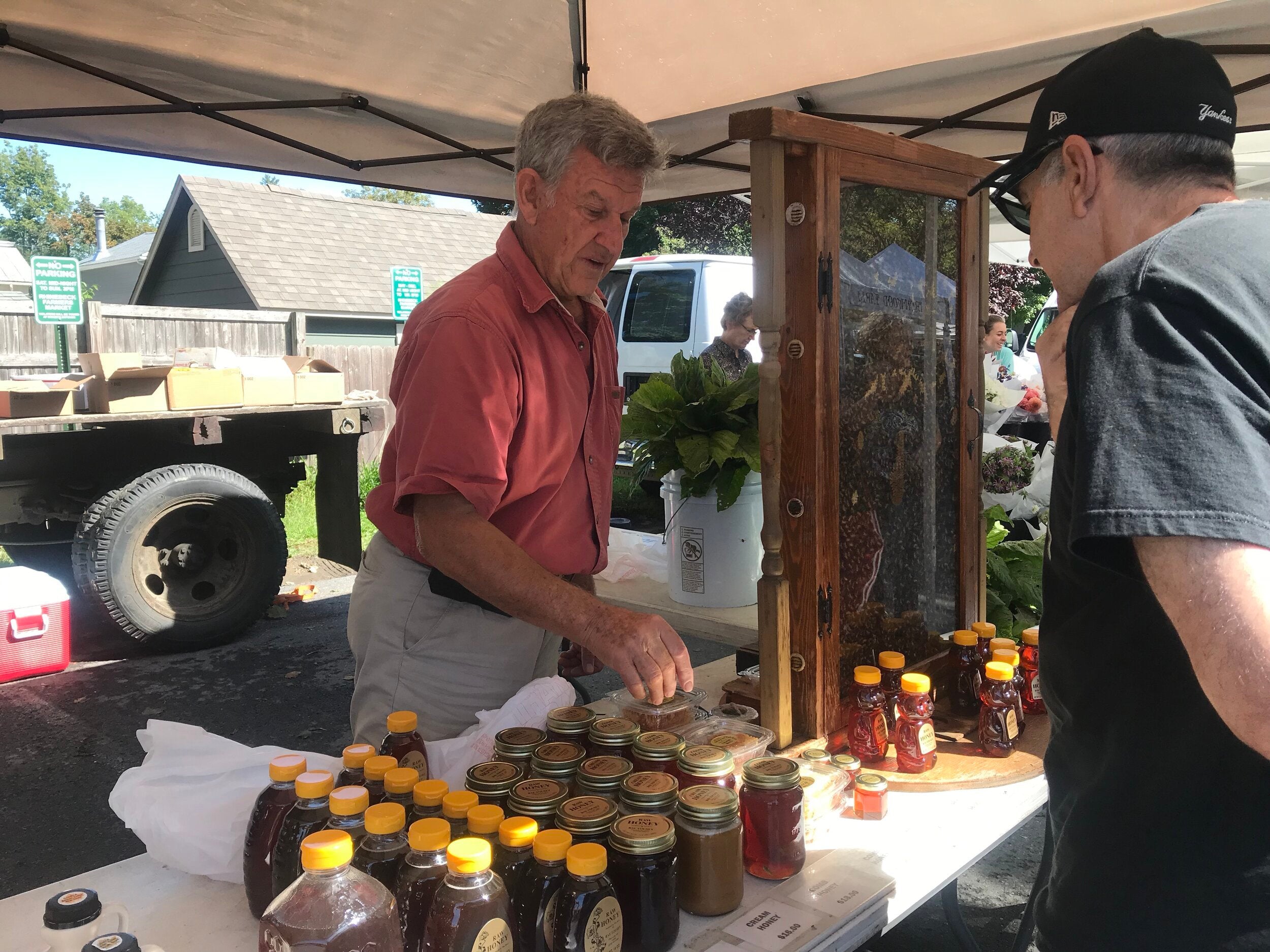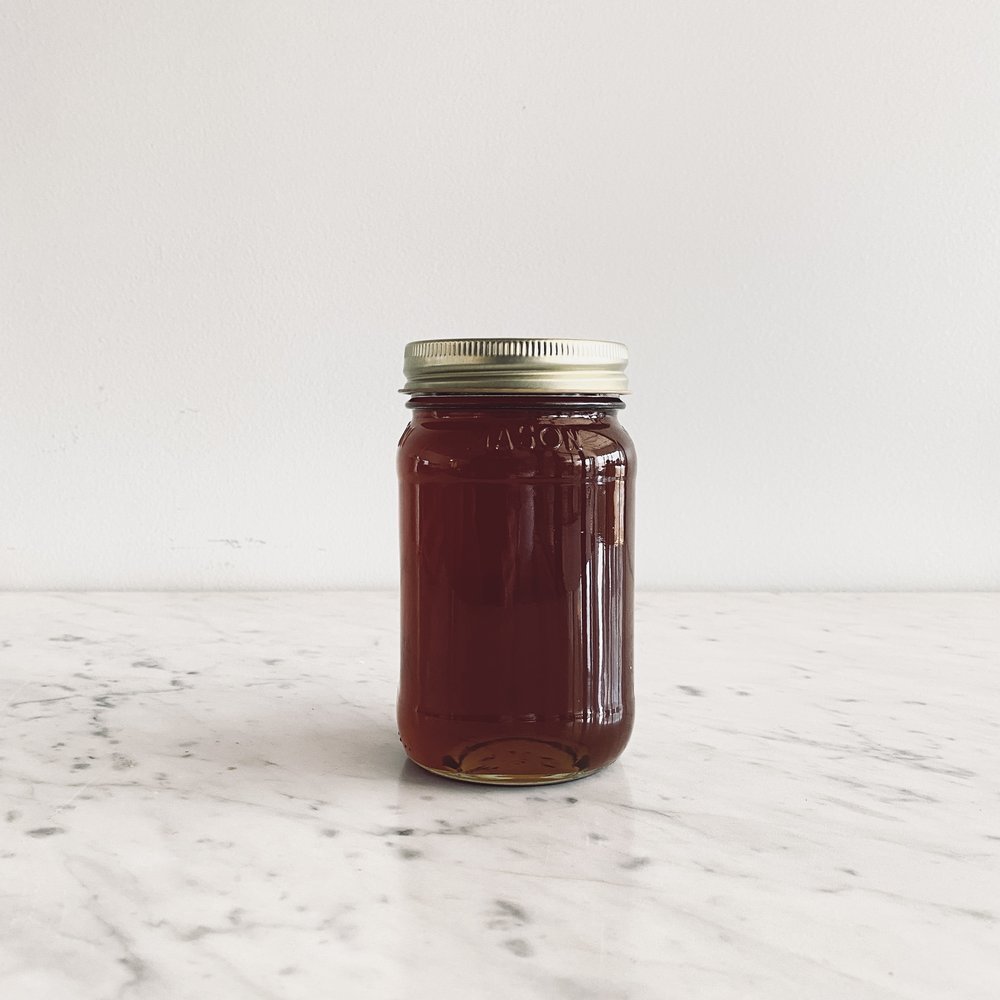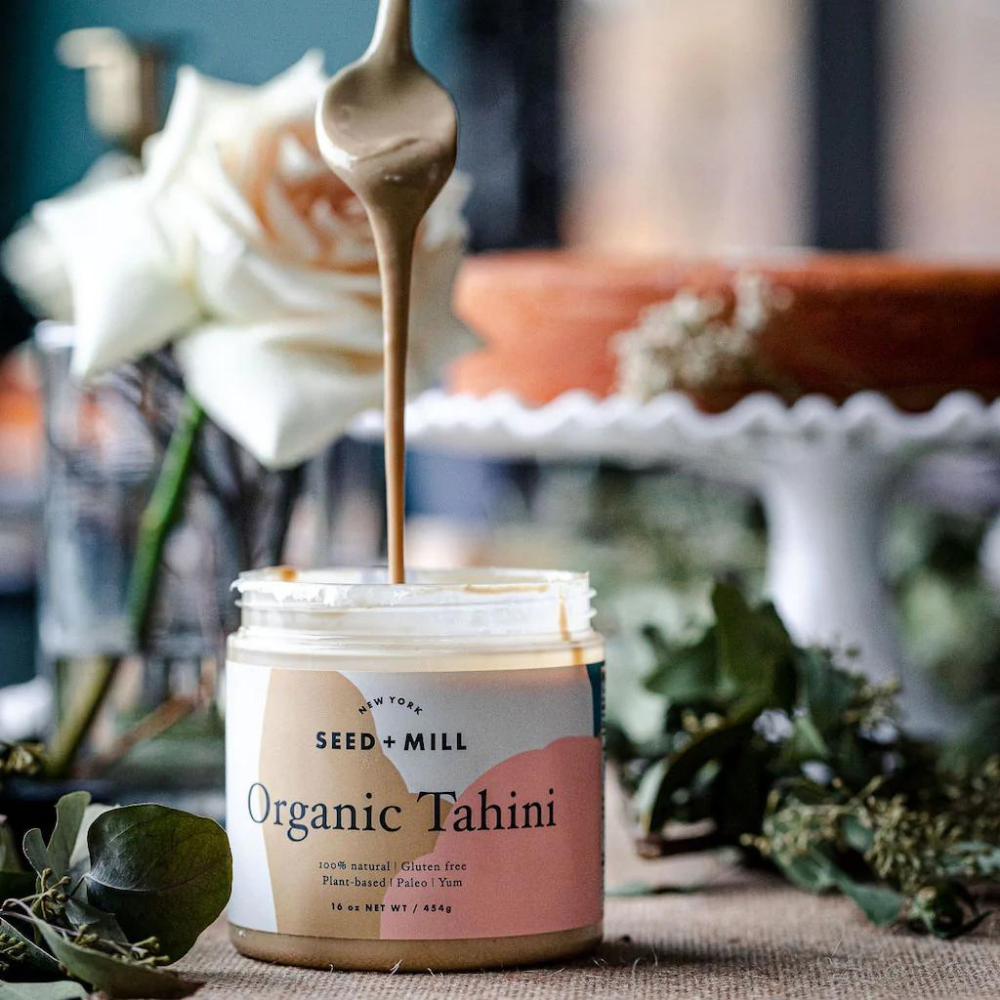It Takes a Family
"One of my favorite relationships with the honey bee is recognizing the similarities between their society and ours. A honey bee can not live alone: 'It takes a family.'"
- Ray Tousey, Beekeeper and Owner of Tousey Farms
This week, we had the pleasure of chatting with Clermont-based beekeeper Ray Tousey, who sells his delicious honey products throughout the Hudson Valley. Ray and his bees have a cherished presence at local farmer's markets and on the land surrounding them; Ray's bees have pollinated countless acres of trees and produce on nearby farms and have helped the agriculture grow and thrive.
Ray is no less special – his knowledge and passion for bees is contagious, and will only make you hungry to learn more. Enjoy our conversation below – and some of Ray's honey, which you can find at both Mast locations, or at the Rhinebeck Farmer's Market to see Ray (and his live observation hive) in person.

Photo credit: Marist Circle
Mast Journal: How did you get started with beekeeping and collecting honey? When did you first become curious about bees in general?
Ray: I once grew apples on my farm and rented hives from a local bee keeper for pollination. He eventually retired and l purchased his hives. He was my mentor. From there, l acquired more hives, sold honey, and pollinated neighboring farms; I grew with demand.
Mast Journal: What do you think people wouldn’t expect, or what is possibly misunderstood, about beekeeping? About bees?
Ray: There is no random activity in a honey bee hive. Bees are highly organized and all activity is directed towards survival of the colony. Honey bees are at the top of the insect social order in part due to their ability to overwinter as an active colony. They never go dormant.
Mast Journal: Can you walk through the basic steps of how you collect the honey?
Ray: ln New York State, bees begin bringing pollen (protein) and nectar (later converted to honey) into the hive for basic food. Honey bees are vegetarians: they live on pollen, honey, and water. Once their immediate food needs are met, they begin stockpiling surplus for the upcoming winter. As the beekeeper, l determine their winter needs and harvest any extra.
Once harvested, I use a stainless steel circular extractor to spin the honey out of the frames it is stored in using centrifugal force. The honey then drains to bottom of the extractor, where l jug it.

Mast Journal: For you, what is the most challenging part to get right with beekeeping and collecting honey?
Ray: The most challenging part of beekeeping today is keeping them alive and healthy. We are experiencing historically high hive loss rates – no one is sure why. Numerous authors have published articles detailing the problem. Some blame pesticides, some blame global warming, some blame the Democrats. We get the problem, we are looking for solutions.
Mast Journal: I think people feel a great curiosity about bees, but also a trepidation towards them. Can you describe why you bring a live bee display to your market stand, and how people react?
Ray: In the insect world, people tend to kill anything they don’t understand. Most insects, but not all, are beneficial to man either directly or indirectly. Hornets and yellow jackets are carnivorous: they live on mosquitoes, house flies, and horse flies. They are actually beneficial to man yet we go to great lengths to kill them. They only attack man when threatened. And yes, it sure hurts.
Bringing the observation hive to the market accomplishes just that; people have the opportunity to observe. Young and old alike can see there is no threat. The bees are housekeeping, grooming, feeding larva, etc. They are not after your sneakers, shirt, or wallet. They intend no harm, and left alone they lead their lives. The intent is to educate and calm people. "Look closely – the liquid in those cells is honey. The same product you just purchased."
Mast Journal: It’s clear that you have a cherished presence at the farmer’s markets you frequent in the Hudson Valley. What is your favorite part about attending the farmer’s markets and interacting with customers?
Ray: Public education. Much has been written about the honey bee; however, visual trumps print. The observation hive allows people insight into a hive in real time. Beyond that, people return week after week to note change. The hive evolves throughout the season as the colony progresses. Much like we raise our families, it’s an evolution.
Mast Journal: Beyond honey, it’s fascinating that your bees have helped pollinate hundreds of trees in the area and have contributed to keeping the agriculture alive and healthy. That’s a very special impact they have.
Ray: All fruits and vegetables require pollination. This is accomplished by numerous methods. Grapes are pollinated by wind, other fruits and vegetables are pollinated by a variety of insects. Among insect pollinators, the honey bee is lead dog. Pollination can come in degrees. A poorly pollinated cucumber will have a curve caused by incomplete seed count. Since the grower is paid by weight, fewer curved cucumbers fit in a box than straight cucumbers. A poorly pollinated apple will be smaller, possibly have a flat side. The apple blossom was pollinated but not completely, resulting in poor seed count. There are numerous sources of pollination, the honey bee being the most important.
Mast Journal: What are some of your favorite ways to enjoy honey?
Ray: Honey is enjoyed in many different ways. Of course honey is a food, used primarily as a sweetener, but it also has multiple medicinal uses. Honey will not support bacteria; this is why your mother gave it to you mixed in warm milk for sore throat and stomach issues. It is also used on serious burns since it prevents infection while skin heals. Honey is a product of nature and thus can not be patented. Bottom line, modern medicine shuns honey since there is not a buck to be made.
Mast Journal: Finally, what’s your favorite part about what you do?
Ray: One of my favorite relationships with the honey bee is recognizing the similarities between their society and ours. A honey bee can not live alone: “It takes a family.” The politics of a bee hive are, in many ways, similar to ours. Their members exhibit Republican traits: work ethic, light on food stamps, welfare, unemployment pay. A day’s work for a day’s pay. Earn your keep or you’re out. They also display Democratic traits in their social values. Every bee in a colony will have the same level of food in its stomach. Wealth (food) is evenly distributed. There are no fat bees next to starving bees.
Honey bees vote on major issues that affect the entire colony: One bee, one vote. The “waggle dance” is employed by the bees to vote on various options, majority rules.
During swarm season, scouts recon the surrounding area and report back suggesting various sites the swarm might locate. The scouts employ the “waggle dance”, and whichever scout gains the most support wins. The same election process is used to determine the best food source location. Voting is common on major issues. Again, majority rules.


